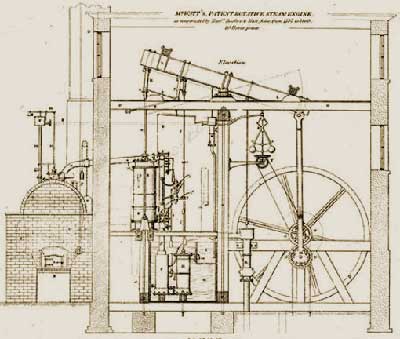1769 – James Watt Patents the Steam Engine
James Watt, the son of a merchant, was born on January 19, 1736, in Greenock. He worked as a mathematical-instrument maker as a teenager and soon became interested in steam engines, which were used at the time to pump water from mines. His interest really took off in 1763 when he was given a Newcomen steam engine to repair. Watt realised that he could improve the engine’s efficiency by the use of a separate condenser. This made Watt’s engine 4 times more powerful than earlier designs. Watt’s genius with invention was matched by his business acumen and entrepreneurial skills. His patent prevented any rival manufacture and the development of any further improvements to the Newcomen engine he had based his invention on so that the ‘Boulton & Watt’ company he had formed with his backer had a monopoly on production. Watt compared the output to the engine to the pulling power of horses formerly used in the mines giving rise to the ‘horsepower’ ratings still used in engines today. Mine owners who used his machine were required to pay him one third of the money they were saving by using his engine. Not surprisingly Watt became very well off as a result. Though Watt was not actually the inventor of the steam engine, his contribution to it’s development was significant and it is recognised that the electrical unit the ‘Watt’ is named as a mark of respect for this great inventor and pioneer of the industrial age who died in 1819 leaving a legacy of innovation that had changed the course of history.






